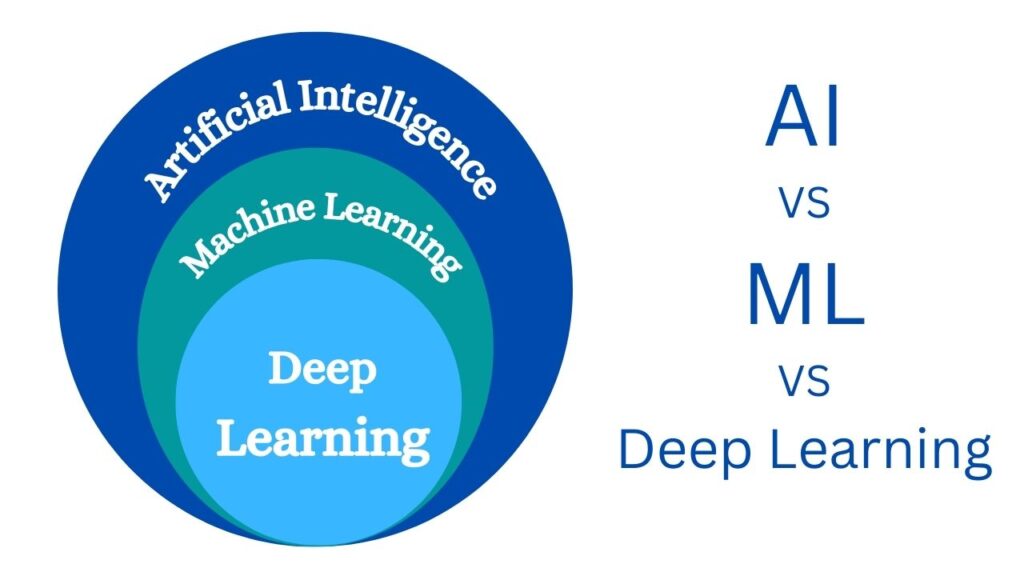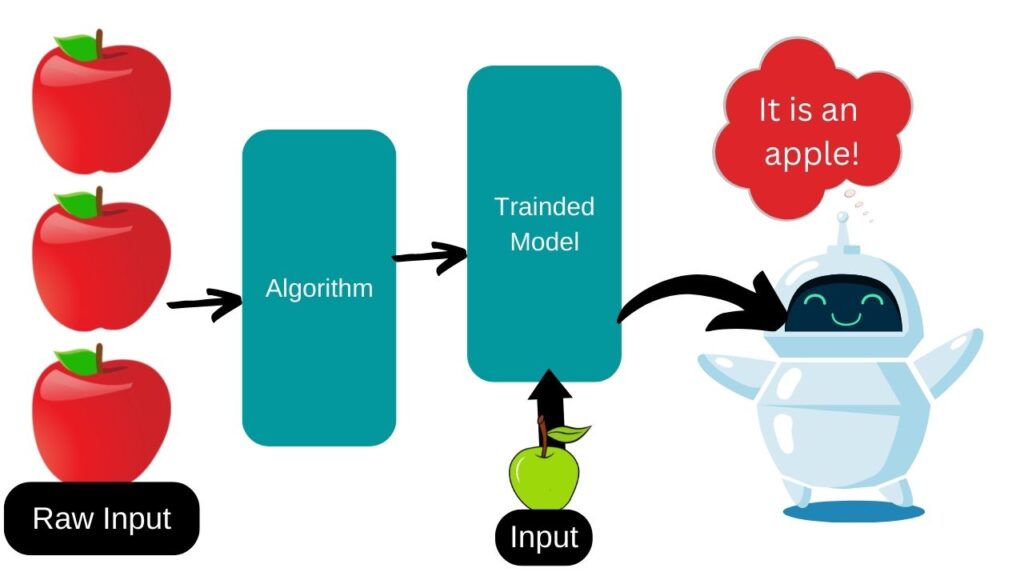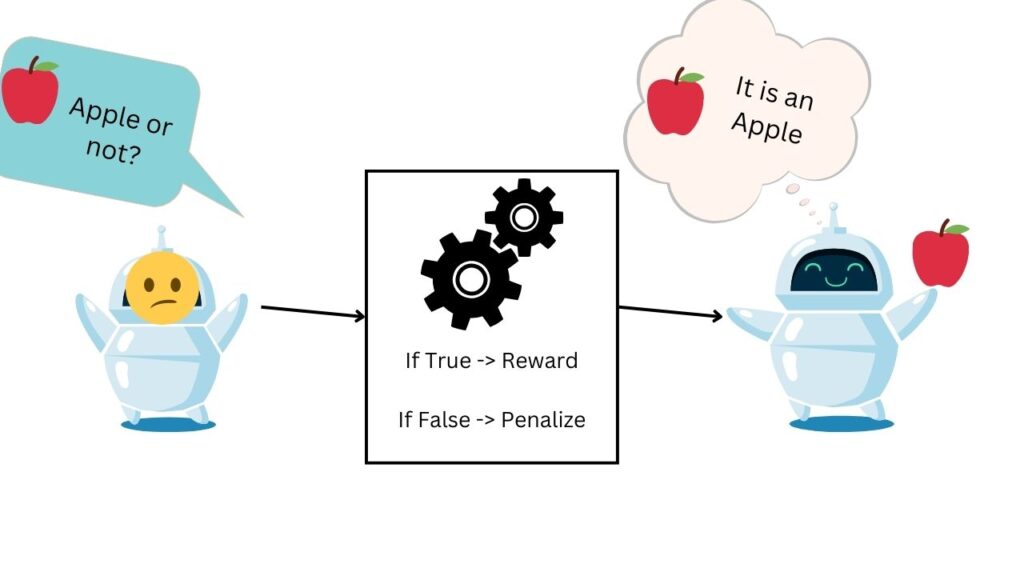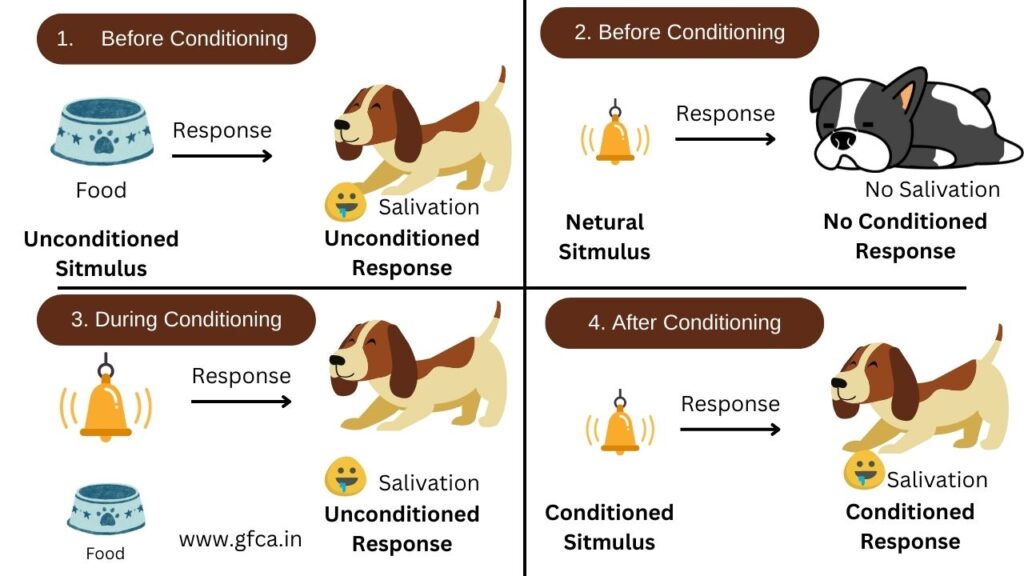
Evaluation & Feature of Machines
As you know we are living in a world of humans and machines. Humans have been evolving and learning from past experiences for millions of years. On the other hand, the era of machines and robots has just begun. In today’s world, these machines or robots are like they need to be programmed before they actually follow your instructions. But what if the Machine started to learn on its own this is where machine learning comes into the picture.
What is Machine Learning
Machine learning is the core of many futuristic technological advancements. You can see various examples or implementations of machine learning around us. Such as Tesla’s self-driving car, Apple Siri, Sophia’s AI robot, and many more are there. So what exactly is machine learning? Machine learning is a subfield of artificial intelligence that focuses on the design of a system that can learn from experience, and make decisions and predictions based on the experience. Which is data in the case of machines. Machine learning enables computers to act and make data-driven decisions rather than being explicitly programmed to carry out a certain task. These programs are designed to learn and improve over time.
Biggest confusion: AL and ML vs Deep Learning

Let’s move on and discuss one of the biggest confusion among the people in the world. They think that all three of them AI, machine learning, and deep learning are the same. Let me clarify things for you.
Artificial Intelligence
Artificial intelligence is a broader concept of machines being able to carry out tasks in a smarter way. It covers anything which enables the computer to behave like humans. If you are talking to Siri on your phone and you get an answer. You are already very close to it. So this was about artificial intelligence.
Machine Learning
As I already said machine learning is a subset of a current application of AI. It is based on the idea that we should be able to give machines access to data and let them learn from themselves. It’s a subset of artificial intelligence that deals with the extraction of patterns from data sets. The machine can not only find the rules for optimal behavior but also can adapt to the changes in the world. Many of the algorithms involved have been known for decades and centuries. They can now scale up to massive data volumes. This was about the machine learning part.
Deep Learning
Deep learning is a subset of machine learning. Where similar machine learning algorithms are used to train deep neural networks so as to achieve better accuracy.
I hope now you understood machine learning AI and deep learning. All three are different.
How does Machine Learning Work?
One of the approaches is where the machine learning algorithm is trained using a label or unlabeled training data set to produce a model. New input data is introduced to the machine learning algorithm and it makes a prediction based on the model. The prediction is evaluated for accuracy and if the accuracy is acceptable the machine learning algorithm is deployed. If the accuracy is not acceptable the machine learning algorithm is trained again and again. With an argument, a training data set was just in the high-level example as there are many more factors and other steps involved in it.
Machine Learning Types:
- Supervised
- Unsupervised
- Reinforcement
Let’s see what each of them are how they work, and how each of them is used in the field of banking, healthcare, retail, and other domains. Don’t worry! I’ll make sure that I use enough examples and implementation of all three of them to give you a proper understanding of it.
Machine Learning: Supervised
Let’s see a mathematical definition of supervised learning supervised learning is where you have input variables X, and an output variable Y. You use an algorithm to learn the mapping function from the input to the output. That is y equals F(X) the goal is to approximate the mapping function. So a lot whenever you have a new input data X you could predict the output variable.
I think this was confusing for you. Let me simplify the definition of supervised learning. We can rephrase the understanding of the mathematical definition as a machine learning method, where each instance of a training data set is composed of a different input attribute and an expected output. The input attributes of a training data set can be of any kind of data. It can be a pixel of an image, It can be a value of a database row, or it can even be an audio frequency histogram. For each input instance and expected output values associated. The value can be discrete, representing a category, or can be a real or continuous value. In either case, the algorithm learns the input pattern that generates the expected output. Once the algorithm is trained it can be used to predict the correct output of a never seen input.

In this image, you can see that we are feeding raw inputs as the image of Apple to the algorithm. As a part of the algorithm, we have a supervisor who keeps on correcting the machine. Or who keeps on training the machine? It keeps on telling him that yes it is an Apple, no it is not an apple. So this process keeps on repeating until we get a final trained model. Once the model is ready it can easily predict the correct output of a never seen input. In this image you can see that we are giving an image of a green apple to the machine and the machine can easily identify it as “yes” it is an apple. And it is giving the correct result.
Supervised Learning Example

Let’s discuss another example of it. This image shows an example of a supervised learning process, used to produce a model which is capable of recognizing the Ducks in the image. The training data set is composed of label pictures of ducks and non-ducks. The result of the supervised learning process is a predictor model. Which is capable of associating a label duck or not duck to the new image presented to the model. Once trained the resulting predictor model can be deployed to the production environment like a mobile app.
For example, once deployed it is ready to recognize the new pictures. You might be wondering why this category of machine learning is named supervised learning. Well, it is called supervised learning because of the process of an algorithm learning from the training data set. It can be thought of as a teacher supervising the learning process. The learning stops when the algorithm achieves an acceptable level of performance. Let’s move on and see some of the popular supervised learning algorithms.
Supervised Learning Algorithms
- Linear Regression
- Random Forests
- Support Vector Machines
these are just for your information
Supervised Example and Use Cases
Let’s see some of the popular use cases of supervised learning.
1. We have Cortana. Cortana or any other speech automation in your mobile phone trains using your voice, and once trained it started working based on that training. This is an application of supervised learning. Suppose you are telling “OK Google call Nitin” or you say “Hey Siri call Nitin” and you get an answer to it. The action is performed and automatically a call goes to Nitin. These are just an example of supervised learning.
2. A weather app based on some of the prior knowledge like when it is sunny, the temperature is higher when it is cloudy, humidity is higher, any kind of that they predict the parameters for a given time. This is also an example of supervised learning. As we are feeding the data to the machine and telling that
“whenever it is sunny the temperature should be higher”
“whenever it is cloudy the humidity should be higher”
It’s an example of supervised learning
3. Biometric attendance where you train the Machine. After a couple of inputs of your biometric identity beat your thumb your iris or your earlobe or anything. Once trained the machine can validate your future input and can identify your next comes.
4. Banking Sector:- In banking sectors supervised learning is used to predict the Credit Worthiness of a credit cardholder, by building a machine learning model to look for faulty attributes, and by providing it with data on delinquent and non-deliquent customers.
5. Healthcare Sector:- In the healthcare sector it is used to predict the patient’s readmission rates, by building a regression model by providing data on the patient’s treatment, administration, and readmissions to show variables that best correlate with readmission.
6. Retail Sector:- In the retail sector it is used to analyze a product that a customer buys together by building a supervised model, to identify frequent itemsets and association rules from the transactional data
Machine Learning: Unsupervised
Let’s learn about the next category of machine learning the unsupervised part. Mathematically unsupervised learning is where you only have input data X and no corresponding output variable. The goal of unsupervised learning is to model the underlining structure or distribution in the data in order to learn more about the data.
“In an unsupervised learning approach, the data instances of a training data set do not have an expected output associated with them. Instead, unsupervised learning algorithm detects pattern based on init characteristics of the input data.”
An example of machine learning tasks that apply unsupervised learning is clustering. In this task, similar data instances are grouped together in order to identify clusters of data.

In this image, you can see that initially, we have different varieties of fruits as input now these sets of fruits as input X are given to the model now once the model is trained using an unsupervised learning algorithm the model will create clusters on the basis of its training it will group the similar fruits and make their cluster.
These are called unsupervised learning because unlike supervised learning ever there are no correct answers and there are no teacher algorithms left on their own to discover and present the interesting structure in the data let’s move on and see some of the popular unsupervised learning algorithms
Unsupervised Learning Algorithms
- K-Means
- Apriori Algorithm
- Hierarchical Clustering
Unsupervised Example & Use Cases
Use Cases
1. Suppose a friend invites you to his party and where you meet totally strangers. You will classify them using unsupervised learning as you don’t have any prior knowledge about them. This classification can be done on the basis of gender, age group, dress, education, qualification, or whatever way you might like.
Why this learning is different from supervised learning? Since you didn’t use any past or prior knowledge about the people, you kept on classifying them in the book. They kept on coming you kept on classifying them. Yeah, this category of people belongs to this group, this category of people belong to that group, and so on.
2. Suppose you have never seen a football match before and by chance you watch a video on the internet. Now you can easily classify the players on the basis of different criteria like player wearing. The same kind of jersey, or in one class player wearing a different kind of jersey is in a different class, or you can classify them on the basis of their plane style like the guys are attacker, so he is in one class he’s a defender, he’s in another class or you can classify them whatever way you observe. This was also an example of unsupervised learning.
Examples
1. Banking Sector:- In the banking sector, it is used to segment customers by behavioral characteristics, surveying prospects, and customers to develop multiple segments, using clustering.
2. Healthcare Sector:- It is used to categorize the MRI data by normal or abnormal images. It uses deep learning techniques to build a model that learns from different features of images to recognize a different pattern.
3. Retail Sector:- In the retail sector it is used to recommend products to customers based on their past purchases. It does this by building a collaborative filtering model based on their past purchases by them. I assume you guys now have a proper idea of what unsupervised learning means. If you have any slightest doubt don’t hesitate and add your doubt to the comment section.
Machine Learning: Reinforcement
Reinforcement learning is a type of machine learning algorithm which allows software agents and machines to automatically determine the ideal behavior, within a specific context to maximize its performance. Reinforcement learning is about the interaction between two elements the environment, and the learning agent. The learning agent leverages two mechanisms namely exploration and exploitation. When a learning agent acts on a trial and error basis it is termed exploration. And when it acts based on the knowledge gained from the environment it is referred to as exploitation. This environment rewards the agent for correct actions which is a reinforcement signal. Leveraging the rewards obtain the agent improves its environment knowledge to select the next action.

In this image, you can see that the machine is confused about whether it is an apple or it’s not an apple. Then the machine is trained using reinforcement learning. If it makes the correct decision it gets a reward point for it, and in case of wrong, it gets a penalty for that. Once the training is done now the machine can easily identify which one of them is an apple.
Reinforcement Example & Use Cases
Use Cases

How Pablo applied the reinforcement method to train his dog. Pablo integrated learning into four stages. Initially, Pablo gave me to his dog, and in response to the meeting the dog started salivating. Next, what I did he created a sound with the Bell for this the dog did not respond to anything. In the third part, it tried to condition the dog by using the Bell and then giving him seeing food. The dog started salivating eventually a situation came when the dog started salivating just after hearing the bell even if the food was not given to him. The dog was reinforced that whenever the master will ring the bell he will get the food.
Examples
1. Banking Sector:- In the banking sector reinforcement learning is used to create the next best offer model for a call center, by building a predictive model that learns over time as users accept or reject offers made by the sales staff.
2. Health Care Sector:- It is used to allocate scarce medical resources to handle different types of ER cases by building a mark of the decision process that learns treatment strategies for each type of ER case.
Retail Sector:- In the retail sector it can be used to reduce excess stock with dynamic pricing by building a dynamic pricing model, that is just the price based on customer response to the offers. I hope by now you have attained some understanding of what is machine learning and you are ready to move ahead.
Do you know what is Data Science? Read Here…


it was so good